Airtight and Waterproof Window Installation
In this episode of FHB House Wisconsin, builder Ian Schwandt shows how to flash a window opening for a high-performance home with a rainscreen under the siding.
When a house’s windows need to be furred out into the siding plane because of a ventilated rainscreen, the flashing details can be tricky. In order to connect the window rough opening to the outside ZIP System sheathing, we used our cutoffs from cutting the window opening to create a window buck to connect the inside and the outside.
Next, we add a beveled sill piece to the bottom of the window. We do this to direct any water that gets inside the window assembly back out into the ventilated rainscreen. I took pieces of ZIP sheathing, ripped it to the width of the window, and then on the inside, I added a 1/4-in. rip of a 1×4 to give myself the bevel and the pitch going out into the ventilated rainscreen.
Our next step is to flash the window rough opening and connect it to the exterior rainscreen. I’ve chosen to do that with ZIP System Flashing Tape because it’s good continuity of material. We’re using the ZIP sheathing everywhere inside the rough opening, and what this tape will do is help direct any water out into the rainscreen. It completes that seal, and also gives us our airtight rough opening through the window.
Flashing the window rough opening is all about giving water a direct path into the rainscreen space. This can be achieved easily with ZIP tape by following the standard installation process of overlapping seams and rolling the tape. The ZIP tape can also be used to flash the vulnerable inside corners of the window buck.
Our next step is to add this 1×4 framing around the perimeter. This is the same material we’re making the rainscreen out of and is what is going to bring that window out into the rainscreen plane. To complete the rough opening, we use the ZIP tape again to flash the rough opening to the rainscreen 1x material.
Next, we install the window assembly and shim the opening, making sure that the window is plum, level, and square. Finally, we tape the window fins to our 1x rainscreen material. I only tape the sides in the head to allow water to drain down our pitch sill, but to help keep wind-blown rain from getting in, I add a counterflashing to the bottom and just tape it to the bottom fin (not to the rainscreen). If you were in a coastal area, you might want to use stainless steel for this. I happen to have this plastic material left over from another install and chose to use that material.
The final step on the interior of my window installation is to use a prefolded air-sealing tape. I learned about this tape in a Passive House training class. I think it’s a really great way to ensure that you have a very airtight window installed by giving you this extra layer of air-sealing protection on the interior as well as the exterior.

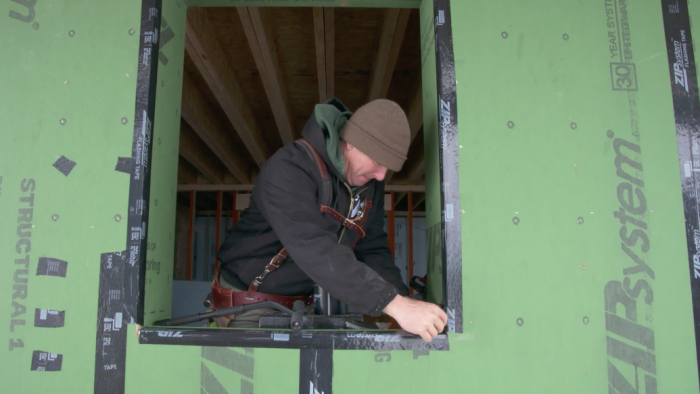


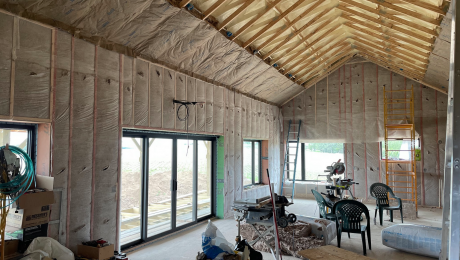

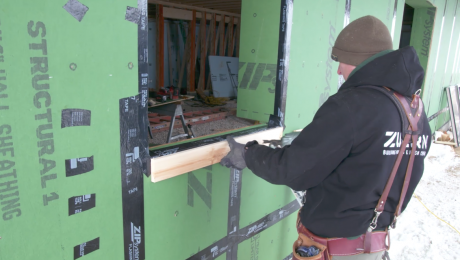

















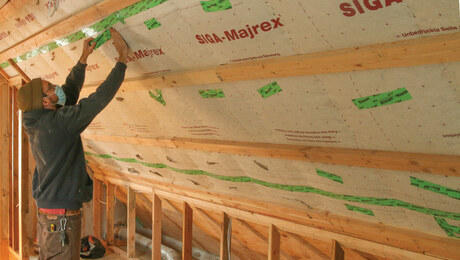
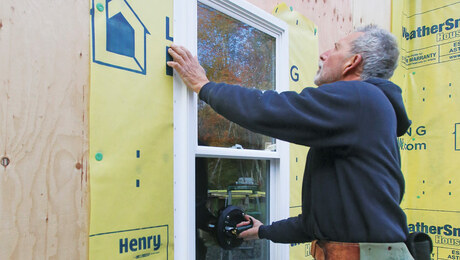











View Comments
I'm no expert but should there be tape on the top side of the 1x rainscreen piece at the head of the window?
Water running down the zip sheathing seems like it could get in behind that piece through capillary action and then it would have nowhere to go because it would be trapped by the tape at the bottom of that piece.
It's not quite the same product but the installation guide for ThermalBuck shows zip tape on the outside of the buck to direct water over the face of the buck rather than behind it. Seems like the same idea should apply to the 1x rainscreen material shown in the video:
https://thermalbuck.com/wp-content/uploads/2020/03/2020-ThermalBuck-Installation-Guide-Zip-System-low-res.pdf
Patrick, Excellent point. After this video was shot and prior to siding I did tape the 1x rainscreen material more or less as you described. Thanks, Ian
Ian: wondering if you considered a fin-less window option to set the windows inside your thick wall, to minimize (hopefully) the amount of weather they see. Also, is the interior tape a 475 product? Thanks.
Dack
I did consider it for a moment but due to the high winds that we regularly get here I wanted the windows in the drain plane. Yes the tape is from 475.